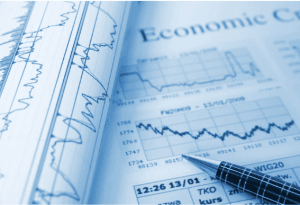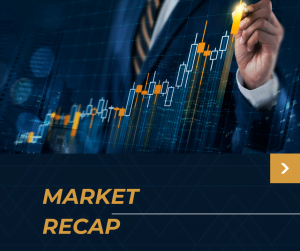Market Madness or Economic Reality?

Different people will choose a different answer from the above two choices. Personally, I believe we are long overdue for some Economic Reality. Why is that? Well, stock markets never have and never will provide linear returns. They do provide excellent long term returns to offset inflation and reduce taxation. We have been in a rising market for some time…pretty much since coming out of the 2008-09 Global Financial Crisis and despite the pullback in Covid March 2020, it has been a really, really good run of increasing stock prices for years. Interest rates were as low as they could have gone and governments at all levels and most countries have spent excessively these last several years and not always for real need. This has led to high government debt levels and increasing taxation at many levels.
Economic Reality – means coming to terms with overvalued securities – especially high technology firms whose price/earnings ratios were way, way too high in recent years and the lingering effects of multiple Covid waves. Last year I wrote and spoke about the growing dangers of inflation and not to consider it as “transitory” as others had. Seeing inflation is now at 7.70%*, many of us (me included) recall all too well the late 70’s and the massive interest rates increases required to quell inflation that reached double digits then. Higher interest rates, as the theory goes, will reduce liquidity and cause businesses and consumers to reduce demand for goods and services. Prices will then fall. It takes time but now here we are and the pain is beginning to be felt. Lastly, include the Russia/Ukraine conflict and you get what we now have; uncertainty and a number of economic problems. The cause and effect are the reality of today and looking forward there are three or four headwinds facing us; Credit squeeze on property owners and/or sovereign credit stress, Crypto winter and resulting loss of wealth effect. China continuing its lockdowns and geopolitical issues such as Taiwan.
What to do? – There are always three choices; Hold, buy or sell. The last choice is a bad solution for a short-term problem. I hear some people comparing quarterly/monthly statement values. No investment account we manage has a time horizon of six months and if it did, it would be 100% invested in high interest cash savings. The vast majority have time horizons of ten plus years whether it be for retirement savings while working or for sustainable income when retired. Interest rates hikes have driven bond prices lower (a mathematical certainty – please see Adam Prittie’s article on this) and we positioned for that by owning short duration fixed income. However, even those have been pushed lower as the market is forward looking and realizes that rates must climb higher to stem the inflation issues. Canada’s large stock-based index (S&P/TSX) is down ~10% year to date…yet up 29.65% over the past two years and up 140.44% over the past ten years! The USA stock market as measured by the S&P 500 is down ~20% year to date, yet up 25.09% over the past two years and up 245.20% over the past ten years – all for the time frames indicated to June 23, 2022. Clearly, you are rewarded with awesome above average returns in equities by staying invested (or better yet buying more) and not selling in tough times. You are rewarded with large gains afterwards to make up for your patience during the tough times. That’s the payoff! The above is proof that month to month or quarter to quarter measurement is not representative of the long-term results; so why fret over them?
The bright spot! – We have all (well nearly all) seen this movie before many times. We all instinctively know how it will play out – a temporary broad-based decline followed by a new high. Some sectors will be hurt more than others (technology) and some less (banks and commodities). In addition, your private investments will provide stability and continuity. It may also present an opportunity to get back taxes paid over the past few years. This is because if we can create a loss by selling a stock in a non- registered account, we can buy it (or a similar version) back in your TFSA/RRSP and use the loss to offset capital gains paid in 2019 – 2021. You still get all the upside when it happens and you get tax back! We like that.
Stock markets are leading indicators – The forward-looking market is telling us what’s coming in ~ six months. Perhaps a recession this fall or early 2023? I cannot say for certain, but what I do know is that by the time the Bank of Canada announces that we are officially in a recession, we will be at or near bottom and/or the upside has historically already begun. If you wait for all the “lights to be green” you will very likely miss the opportunities that an economic downturn provides. The opportunity to rebalance or buy great businesses at good discounts. That is what we will be doing. We have set aside plenty of fixed income and income-oriented investment to see retired clients and more conservative investors through the storm…so much so we may use some of it to go equity shopping during the downturn.
Proven high quality stocks are still very much needed to offset the scourge of inflation and the taxman in non-registered accounts. Interest rates are still comparably low. High inflation and taxes combined will destroy a traditional income producing investment portfolio comprised of public fixed income over time. It’s a great recipe “to outlive” your retirement account income. Embrace equities and accept the short-term downside to reap the long-term upside. As Warren Buffet said so well “I’d rather a lumpy 8% per year return over time in stocks than a linear 2% in bonds”. Clients who invested in equites 5, 10, 15 years ago are today in this environment still benefiting from double digit returns given their time inthe market.
Use this time – Reflect on where you have come over the past 3, 5 and 10 plus years as opposed to 3, 5 and 10 months. Don’t compare short term returns and don’t extrapolate them. Spring always follows winter and so do better economic times after a recession. If you want to look at your accounts online – do so. However, when done, go to Google and look up Royal Bank stock, Visa, Berkshire Hathaway, Sony, Brookfield Asset Mgmt., Cymbria etc., and look at the chart over the past 10, 15, 25 years. Do this and you will sleep well at night knowing that not only have these (and so many others) produced great wealth over time, but after every single decline a new high followed.
In closing – “this time is not different” and his too shall pass. In the meantime, stick with your well constructed portfolio that was designed based on your needs, risk tolerance and time horizon. Stick to your investment/financial plan and use your extra money to buy as much of the high-quality proven names as you can while they are on sale.
IMPORTANT NOTES:
- Equities and stocks are one in the same. They are ubiquitous and synonymous terms
- Return data is derived from Refinitiv Eikon (Thomson Reuters) measured as above time frames to June 23, 2022
- TSX Price return = 61.25%
- TSX total return of 140.44% assumes all dividends reinvested
- TSX return based solely on price return (without dividends) is 5.06% per annum
- SPX price return = 176.33%
- SPX total return of 268.59% assumes all dividends reinvested
- SPX return based solely on price return (without dividends) is 10.70% per annum
* inflation year over year for the period ending May 31, but reported in June
Written By: Michael Prittie








